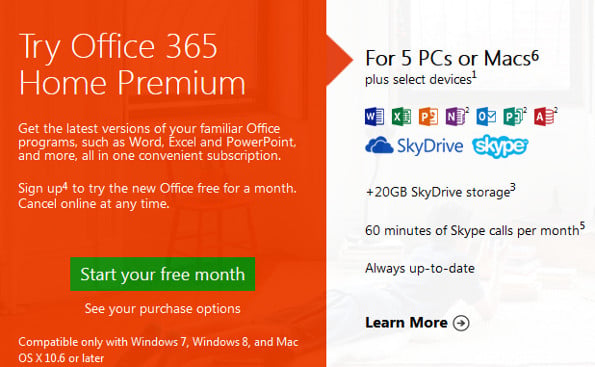Microsoft Knocks Adobe For Discontinuing Packaged Software
When it comes to distributing software, Microsoft and Adobe are certainly on the same page insofar as they both believe that software-as-a-service is the future; it’s only a matter of time before boxed software is a thing of the past.
However, the two companies apparently differ sharply on the timing of the move. Earlier this week, Adobe announced that it would discontinue its Creative Suite and other CS products, so going forward any new customers will have to rely on the Creative Cloud, which requires a subscription-style membership as opposed to the purchase of a physical software box.
Microsoft believes that Adobe pulled the trigger way too early. “Unlike Adobe, we think people's shift from packaged software to subscription services will take time. Within a decade, we think everyone will choose to subscribe because the benefits are undeniable”, reads a blog post from Microsoft’s Clint Patterson. “In the meantime, we are committed to offering choice--premier software sold as a package and powerful services sold as a subscription.”

It’s a bit surprising that Microsoft would weigh in on Adobe’s plans--and take the perspective it has--for several reasons. First, why does Microsoft care what Adobe does with its Creative suite? Further, Adobe says that its cloud service has been a runaway success, and while Microsoft has found that more than a quarter of Microsoft Office purchasers are opting for the SaaS version of the software (Office 365), clearly the market isn’t quite ready for a subscription-only version of Office. However, that doesn’t mean that the market isn’t ready for a subscription-only version of Adobe’s offerings.
Finally, it’s laughable that Microsoft says that SaaS is a ways off, because the company is working hard to make the locally-installed software version of Office a less attractive product that Office 365--most notably by forcing an Office license to be tied to one PC forever.
Maybe Microsoft should just stay out of it and let Adobe fail or succeed on its own while spending more time worrying about its own products.
However, the two companies apparently differ sharply on the timing of the move. Earlier this week, Adobe announced that it would discontinue its Creative Suite and other CS products, so going forward any new customers will have to rely on the Creative Cloud, which requires a subscription-style membership as opposed to the purchase of a physical software box.
Microsoft believes that Adobe pulled the trigger way too early. “Unlike Adobe, we think people's shift from packaged software to subscription services will take time. Within a decade, we think everyone will choose to subscribe because the benefits are undeniable”, reads a blog post from Microsoft’s Clint Patterson. “In the meantime, we are committed to offering choice--premier software sold as a package and powerful services sold as a subscription.”

It’s a bit surprising that Microsoft would weigh in on Adobe’s plans--and take the perspective it has--for several reasons. First, why does Microsoft care what Adobe does with its Creative suite? Further, Adobe says that its cloud service has been a runaway success, and while Microsoft has found that more than a quarter of Microsoft Office purchasers are opting for the SaaS version of the software (Office 365), clearly the market isn’t quite ready for a subscription-only version of Office. However, that doesn’t mean that the market isn’t ready for a subscription-only version of Adobe’s offerings.
Finally, it’s laughable that Microsoft says that SaaS is a ways off, because the company is working hard to make the locally-installed software version of Office a less attractive product that Office 365--most notably by forcing an Office license to be tied to one PC forever.
Maybe Microsoft should just stay out of it and let Adobe fail or succeed on its own while spending more time worrying about its own products.

